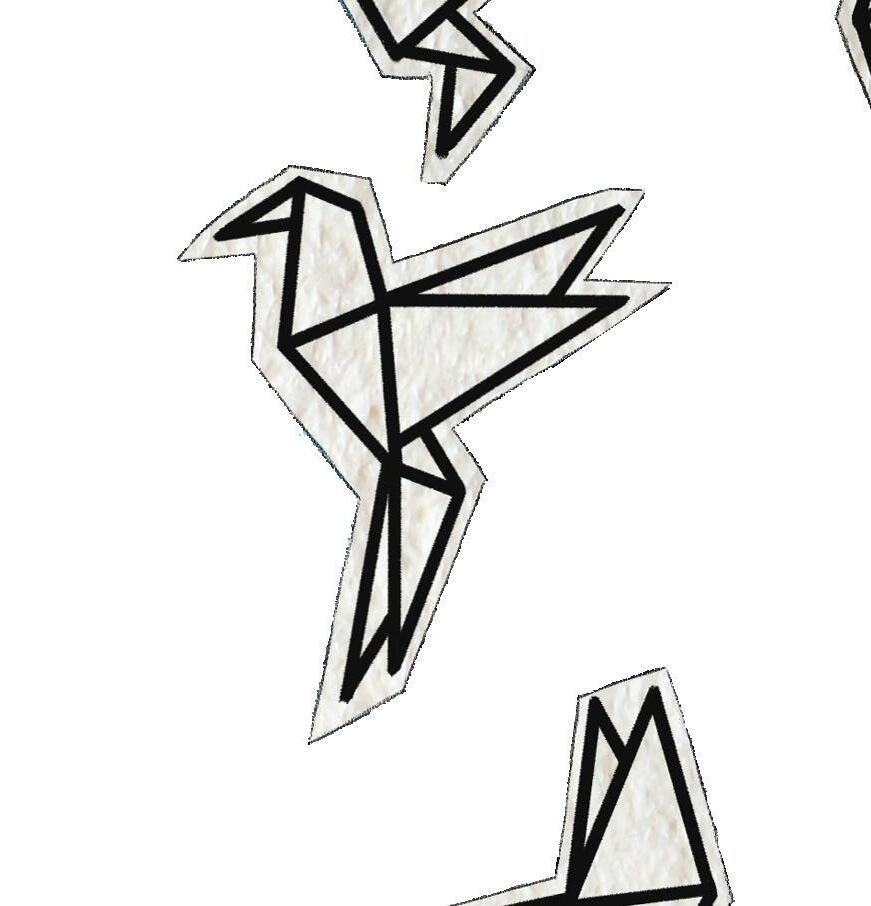
11 minute read
College Composition

By Cabe Packard
Advertisement

Since America’s birth, gun culture has always pervaded. For better or worse, firearms were used to create the country, to build it, and to protect its people. In recent years the debate over gun control has grown exponentially. This is significantly due to the growing number of mass shootings that have taken place over the past decade. In response to this, two extremes can be found: A push for the complete banning of firearms, and the idea that everyone should be able to get a gun. Despite the seemingly growing divide of the right and left, most citizens do not fall fully on one side of the spectrum, holding more nuanced opinions on the issue. Among these is Emma González, an 18-yearold student who lost friends in a school shooting at her high school. Another is David French, a supporter of gun ownership rights and the National Rifle Association (NRA). Although both give compelling arguments in the essays they have written on the subject, there are differences in their personal experiences with danger, views on civilian ownership of military-grade firearms, and opinions on American gun regulations.
The first major difference between their two respective essays is in each authors’ different experiences with dangerous situations. González starts by talking about how her own identity doesn’t matter after losing her friends, and due to this, she refers to herself as “we” throughout her essay. She explains why she does this when she asks, “who are we? We are the people who died in the freshman building on Valentine’s Day at Douglas High, and the people who died in every mass shooting in U.S. History. We are everyone who has been shot at, grazed or pierced by bullets, terrorized by the presence of guns and gun violence in America” (González 890). From this, the reader learns that she hopes to make a difference in the fight against gun violence, given her personal connection to it. French on the other hand gives an example of a time his family was at risk, saying, “A man got out and walked up to my wife and kids. Strangely enough, at his hip was an empty gun holster. She’d never seen him before. She had no idea who he was. He demanded to see me... My wife cleverly defused the confrontation before it escalated, but we later learned that this same person had been seen, hours before, slowly driving through the parking lot of our kids’ school” (French 893). This excerpt tells of a time when French’s family was greatly vulnerable, which allows him to later explain why he personally sought to get a gun and a concealed carry permit for their protection. This personal account is in contrast with González, who speaks in absolutes and tries to convey her own emotions in her writing. With this, both essays deeply connect with the audience but do so in different ways.


The essays also use these same tones when continuing to explain their different views on assault weapon ownership. González proposes her logic by writing, “If I’m able to communicate one thing to adults, it would be this: it should not be easier to purchase a gun than it is to obtain a driver’s license, and military-grade weapons should not be accessible in civilian settings. You don’t drive a NASCAR on the street, no matter how fun it might be, just like you don’t need an AR-15 to protect yourself when walking home at night. No one does” (González 891). Ignoring the fact that she doesn’t know NASCAR is an association (not a vehicle), González makes a witty argument that personal enjoyment should not trump safety. French takes the same stance on safety but supports the right of citizens to own assault weapons. This is seen when he says, “Progressive policy prescriptions, like assaultweapons bans and bans on large-capacity magazines, are opposed because they’re perceived to have exactly the wrong effect. They’ll present only the most minor of hurdles for the lawless, while the law-abiding experience the law’s full effect. It’s a form of collective punishment for the innocent, a mere annoyance--at best--for the lawless” (French 895). Comparing this quote with the one from González’s essay shows that, despite their similar desire for safety, the two writers have different ideas on the role of assault weapons in the U.S. This is also reflected in the way they address their audience. French references his knowledge of various proposed policies, while González attempts to use comparisons and quick, absolute statements. Their differing personal thoughts also play a part in their stances on


American gun regulation. González begins by stating her opinion that, “At the end of the day, we don’t want people to have their guns taken away. We just want people to be more responsible. We want civilians to have to go through more rolls of red tape to get what they want, because if any of that tape can stop those who shouldn’t own a gun from owning a gun, then our government will have done something right...We don’t need the NRA’s excuses, we need the NRA to finally stand up and use its power to supply the American people with something they deserve” (González 891-892). In saying this, González is trying to convince her audience to support harsher gun regulation. Her argument relies more on emotion than it does on facts. This makes sense as she must work with what she has; emotion, not a background of American legislation. French combats her argument by saying, “It’s a myth that gun owners despise regulation. Instead, they tend to believe that government regulation should have two purposes - to deny guns to the dangerous while protecting rights of access for the law-abiding. The formula is simple: Criminals and the dangerously mentally ill make our nation more violent. Law-abiding gun owners save and protect lives. Thus the overwhelming support for background checks, the insistence from gun-rights supporters that the government enforce existing laws and lock up violent offenders, and the openness to solutions - like so-called “gun violence restraining orders” that specifically target troubled individuals for intervention” (French 895). With this argument, French tells us that he believes in regulation, but also limiting it to dangerous individuals. Like in the previous quote, he argues that good people can use guns for good, and evil people can use them for evil; the trick is punishing the evil without minimizing the good. This is similar to González’s hope to improve the good, but unlike her, he cites examples and doesn’t rely on emotion nearly as much.
Altogether, the two essays differ in their author’s own dangerous experiences, views on civilians owning assault weapons, and stances on gun regulation in the United States. What is so interesting about this is that both essays cover very similar topics, but do so in such different ways. González is trying to make her audience empathize with the victims of gun violence to try and create change. This is evident in the way she relies very heavily on emotional impact rather than logic. French is a completely different case, relying on facts and his knowledge of gun regulation. Unlike González, he makes no demands and absolute statements, instead simply trying to provide information on gun culture. Despite these differences, neither calls for a revolution nor stays completely to one political side. González doesn’t want to make all guns illegall, and French doesn’t want everyone to own a gun. They both have complex and reasonable arguments and share the goal to make America the best it can be. The past decade has seen the divide between the right and left grow bigger and bigger each year, or at least that’s how it seems. Not only do these essays remind us that are there issues for America to address, but also that its citizens can work together and practice compromise in order to make the country better as a whole.
Works Cited
French, David. “What Critics Don’t Understand about Gun Culture.” The Norton Reader, edited by Melissa Goldthwaite, W.W. Norton & Company, 2020, pp. 893-896.
González, Emma. “Fighting for Gun Control.” The Norton Reader, edited by Melissa Goldthwaite, W.W. Norton & Company, 2020, pp. 890-892.
To Consider What Nature Reveals
By Katelynn Adams


While not everyone is able to gather profound meaning by observing nature, Henry Thoreau attained equilibrium in his observations of just that and shared his experiences with the world. Born post-American Revolution, Henry David Thoreau, an essayist, philosopher and naturalist, maintained a simplistic view of life that allowed him develop a close bond with nature. This closeness in turn allowed him to obtain meaning in the everyday functionality present in nature. Thoreau illustrates such meaning in his essay “The Battle of the Ants,” which parallels the relentless war of ants to that of the more recorded wars between humans and uses this comparison to highlight the repercussions; at the same time, it prompts the reader to open their mind to the influence of nature. In the guise of a seemingly straightforward insight of an ant battle, Thoreau delves into what meaning can be inferred from nature and what new perspectives are out there, awaiting to be realized.
Immediately and throughout the piece, the use of historical allusion is prevalent, although Thoreau’s uses are subtler than they initially appear. An example of such subtleness is seen when the author describes the ants as “Myrmidons” (Thoreau 725). For those learned in Greek mythology, this description is recognized as both soldiers and ant-people. While this description is entertaining at first, it begins to fulfill a deeper meaning when taken into consideration alongside the implication that Myrmidons are often associated with single-minded soldiers tasked with completing a given objective. The reader is left to consider this representation when, later, Thoreau provides a view of the ants akin to humans. Another allusion is perceived when Thoreau introduces a second red ant into the scrimmage and he writes, “perchance he was some Achilles…come to avenge or rescue his Patroclus” (726). Both allusions affirm a story-like aspect to what could be viewed as a mundane and uneventful struggle within nature. Furthermore, the allusions aid in supplying the reader with the entertainment needed to hold their attention, while at the same time laying the groundwork for the deeper meaning of perspective the author wishes to convey.


In the same way that allusion provides a grasp upon which to comprehend the author’s meaning, so too does the meticulous imagery engage the reader and provoke thought. Even before it is acknowledged by the author, the reader would find it difficult not to notice any similarities between the black and red warrior ants described and human soldiers. In the description, “there came along a single red ant…evidently full of excitement” (725-726), Thoreau provides a nexus between insect and human, between the reader and the ant. Attributing an excitement for an impending confrontation leads the reader to imagine the ant, but in a human light. Along with the perceived excitement of the ant, Thoreau himself admits that “[he] was excited somewhat even as if they had been men” (726). He is thrilled and at the same time distressed by the scene as if he has witnessed a human battle. One cannot help but wonder: if he had actually witnessed such a thing, would he have felt those same emotions on a grander scale. Thoreau helps readers relate and through relation readers begin to think, to take into consideration something other than their immediate surroundings or furthermore, to stop and open their minds to their surroundings.
In addition, the overarching symbolism Thoreau implements is seen in a multitude of forms. One instance of this significance is at the end of the deadly brawl when the black ant alights victorious Thoreau writes, “whether he finally survived that combat…I do not know; but I thought that his industry would not be worth much thereafter” (727). Strikingly, the reader can be led to visualize an injured veteran post war, who has been left crippled and no longer able to fight. This brings up the questions: what happens to the injured ants? And for that matter, what happens to veterans after they have fought in the name of freedom? Thoreau admits that he himself does not know the outcome of the war he witnessed (727) or to a finer point, the fate of the lone black ant; therefore, his impartiality could be comparable to the leaders of war. Surely, they care for the outcome of their battles, but it is easily attestable that they do not care for those that execute their commands for violence. In other words, it could be argued that Thoreau was intentional in his depiction of the surviving black ant, and that through that depiction the reader is urged to consider the triumphant scene in the more personal context of an injured human.
Indeed, to continue this personal connection Thoreau aims to make involves considering the time in which this piece was written. In writing post-American Revolution, the author gauges the connection with war and those who have experienced it. Therefore, while the author was not alive during this wartime, some of his audience at that present time assuredly had experience with or had been an onlooker to war. This makes it all the more intriguing when Thoreau provides a perspective that even he was not as observant after only initially witnessing two ants in the struggle for life, as he puts it, “I was surprised to find that the chips were covered with such combatants, that it was not a duellum, but a bellum” not a duel, but a war (725). A war that he walked in and upon and was a witness to was a lifealtering event for these ants. Thoreau describes it as an “internecine war,” destructive on both sides, so the negative aspects are highlighted and not glorified outright, even perhaps when the author mentions not only the sight, but how soundless this exchange was as opposed to the wars of humans (725). This soundlessness of ant war can be interpreted as having no lasting reverberations, unlike the wars of humans. An ant war has no significance to humans, but very likely the opposite is true in reverse. Human wars are loud, ant wars are soundless. The implications are admittedly heavy, and once again show the perspective nature provides when detail is accounted for.
With those elements in mind then, the text as a whole can be surmised to explore how war, in its many forms, pervades history. Perhaps it even suggests how humans partake in similar actions as those of insects in order to ask the question: how can a species with a developed mind still fall prey to such barbarity? Is it to show how war is unavoidable or that humans need to rise above this base instinct and finally achieve a semblance of peace within the species? Thoreau suggests that war takes a multitude of forms and can be implemented for a number of reasons, but that perhaps what can be learned from this particular ant war is that they revert to war for survival, which in turn makes one question our reasons for our savageness.
In sum, Thoreau presents an ant war at face value and leaves it up to the reader to deduce the implications he has strewn throughout. His goal to provide observations to readers with the aim of presenting a perspective that may not have occurred to them, is presented in the piece through a multitude of instances. Layers have been unfolded, but more can be pressed out. Through the techniques of allusion, imagery, symbolism and a persistent audience connection the meaning can be subtly hidden within an unassuming work and left to the reader to decode for themselves what only they can learn.




Works Cited
Thoreau, Henry David. “The Battle of the Ants.” The Norton Reader: An Anthology of Nonfiction, edited by Melissa A. Goldthwaite et al., 15th ed., W.W. Norton, 2020, pp. 725-27.
A Victim of Her Own Environment
By Susan Styles









